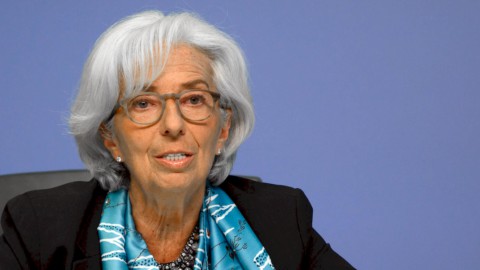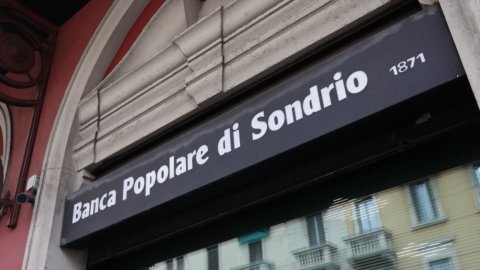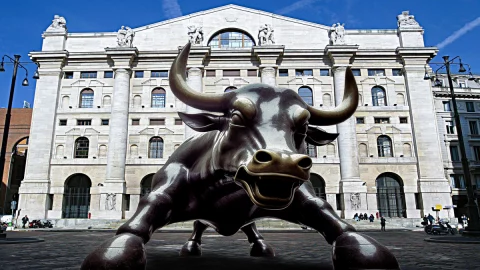Markets see inflation on the horizon and fear that the ECB, like the Fed, may reduce the expansionary monetary policy sooner than expected. This concern, coupled with the resurgence of the delta variant pandemic, triggered the sell-off that hit European markets on Thursday. In the middle of the day, Piazza Affari loses 2,6%, like Paris and Madrid. Only slightly smaller losses in Frankfurt (-2,3%).
ECB: A NEW INFLATION TARGET
In reality, the European Central Bank has tried to send reassuring signals to investors. At the conclusion of the strategy review started in January 2020, the Eurotower today announced a new strategy that slightly raises the inflation target in the medium term (i.e. over 18/24 months): so far the target was a share "lower but close" to 2%; now the new wording speaks of a “symmetrical” target at 2%.
The adjective "symmetrical" means that positive or negative deviations are equally "undesirable". However, the central institution specifies that, when the economy "operates near the minimums of nominal rates", the need for an expansionary monetary policy can "also imply transitional periods in which inflation is moderately above the target". The ECB therefore admits that inflation can exceed 2%, but does not quantify the extent of the deviation considered acceptable. A target "below but close to 2%" in the time of Jean Claude Trichet would have been "something like a target of 1,95%" Lagarde reported at a press conference recalling the time of the last review of the strategy which took place in 2003 .
The number one of the ECB, Christine Lagarde, stressed that 2% should not be considered as a ceiling for inflation. “The main feature of our strategy, approved unanimously by the Council, is our commitment to reach the 2% target – he added – When we say that the approach is symmetrical it means that we will react strongly to counter any significant deviation from the target of 2%. This may lead to a transitional period in which inflation is moderately above target”. “Are we pursuing the Fed's strategy of 2% average inflation? The answer is no,” she later specified in response to a question. A target "below but close to 2%" in the time of Jean Claude Trichet would have been "something like a target of 1,95%" concluded Lagarde at the press conference recalling the time of the last review of the strategy which took place in 2003 .
In itself, this news has positive implications for markets, because it defuses the automatic link between price increases and monetary tightening. The very fact that the ECB is starting to talk about rising inflation, however, is seen by the markets as proof that something is changing in the air and that the Eurotower could start to cool down monetary policy sooner than expected, even if Lagarde he ensured that the medium-term approach to monetary policy is confirmed.
NON-CONVENTIONAL SIZES WILL BE REUSABLE
However, the new inflation target is not the only announcement made today by the ECB. “The set of interest rates remains the main instrument of monetary policy”, it reads in the press release, but “other tools, such as forward guidance, asset purchases and longer-term refinancing operations, which have helped mitigate the constraints generated by the lower bound on nominal interest rates over the last decade will remain an integral part of the toolbox tools".
Translation: once archived, the unconventional monetary policy measures used in recent years will still remain in the quiver of the ECB, which will be able to reuse them if necessary. Again, the message launched by the Central Bank seems reassuring, but the signal picked up by the markets is of an opposite nature: in essence, the Central Bank confirms that we have entered a new phase and that the prospect of monetary tightening is more concrete than in the past.
CLIMATE CHANGE AND HOUSE PRICES
Finally, the Governing Council announced two further innovations.
1) The ECB is committed to "further incorporating climate change considerations into its monetary policy framework", but only with regard to "communications, risk assessments, collateral securities and purchases of securities of private issuers". In appearance, therefore, the climate parameter will not constitute a key requirement for the monetary policy operations relating to the purchases of public bonds, which represent the most significant part of the ECB's balance sheet.
“Climate change has profound implications for price stability through its impact on the structure and cyclical dynamics of the economy and the financial system – added Lagarde – Therefore, the Governing Council is committed to implementing an ambitious action plan connected to the climate. In addition to comprehensively integrating climatic factors into its monetary policy assessments, the Governing Council will adjust the operational framework of monetary policy as regards disclosure, risk assessment, corporate sector asset purchases and the collateral framework.
2) In the future, in its considerations on inflation, the central institute will also take into account the prices of owned homes: at the beginning it will use estimates, but with the prospect of preparing a "multi-year plan" to permanently integrate this variable into the measure of inflation.
Lagarde explained that the review of the strategy was unanimously approved by the Governing Council and that the operation will be repeated in 2025.





